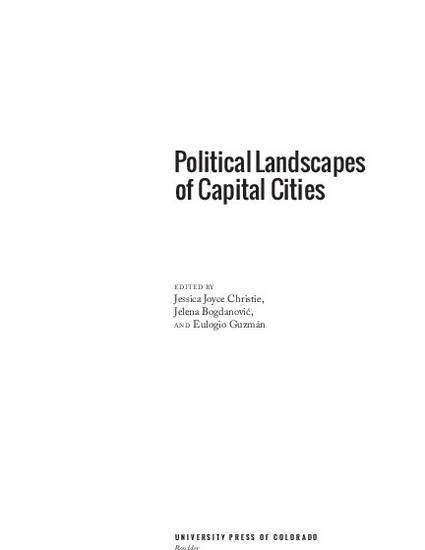
Contribution to Book
The Relational Spiritual Geopolitics of Constantinople, the Capital of the Byzantine Empire
Political Landscapes of Capital Cities
Document Type
Book Chapter
Disciplines
Publication Version
Published Version
Publication Date
1-1-2016
DOI
10.5876/97816073246903.0003
Abstract
Strategically located on a peninsula on the European side of the narrow Bosphorus strait that connects the Mediterranean and the Black Seas (by way also of the Sea of Marmara and the Dardanelles), Constantinople; the capital city of the medieval Roman Empire that we know as the Byzantine Empire (324-1453), was the largest and most thriving urban center in the Old World.1 The city was founded by the first Roman Emperor who embraced Christianity, Constantine I (d. 337), as the eponymous capital outside historically dominant urban centers and as the alternative to the city of Rome. This chapter outlines the physical production of the geopolitical landscape of Constantinople. By highlighting the critical elements of Constantinopolitan spatial configuration this essay questions how the geopolitical landscape of Constantinople was then emulated at alternative sites of authority, in related capital cities of emerging medieval states that adopted Byzantine cultural values and its Orthodox version of Christianity in medieval Bulgaria, Rus and Serbia.
Copyright Owner
Jessica Joyce Christie, Jelena Bogdanović, and Eulogio Guzmán
Copyright Date
2016
Language
en
File Format
application/pdf
Citation Information
Jelena Bogdanović. "The Relational Spiritual Geopolitics of Constantinople, the Capital of the Byzantine Empire" Political Landscapes of Capital Cities (2016) p. 97 - 153 Available at: http://works.bepress.com/jelena_bogdanovic/24/

This chapter is from Christie, Jessica Joyce, Jelena Bogdanović and Eulogio Guzmán, eds. Political Landscapes of Capital Cities (Boulder, CO: University Press of Colorado, 2016). Posted with permission.